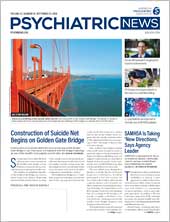Verbal memory tests used to screen for amnestic mild cognitive impairment (aMCI) should be adjusted for sex as well as age and education to avoid underdiagnosis in women and overdiagnosis in men, new research suggests.
In the study, presented in July at the Alzheimer’s Association International Conference, investigators derived normative verbal memory test cutoff scores from men and women in the Mayo Clinic Study of Aging (MCSA) and then compared those cutoffs to those using the standard age- and education-adjusted thresholds for impairment among individuals in the Alzheimer’s Disease Neuroimaging Initiative (ADNI).
The comparison revealed that the currently used cutoffs missed about 10 percent of women with aMCI and falsely labeled about 10 percent of men who don’t have the condition.
The likely reason is the well-known female advantage over men in verbal memory, which could allow women to continue to perform normally on the tests despite moderate levels of dementia-related pathology, according to lead author Erin Sundermann, Ph.D., an assistant project scientist in the Department of Psychiatry at the University of California, San Diego.
“In theory, because women perform better, we would expect that if we add sex adjustment, we would identify more impaired women, and more men would be identified as normal. And that’s exactly what we found.”
The results, she said, are important because aMCI is the stage at which drug treatments have the best chance of delaying further impairment. “Alzheimer’s disease is too late. The MCI stage is very important.”
Asked to comment, Anand Kumar, M.D., head of the Department of Psychiatry at the University of Illinois, Chicago, praised the study. “It’s been known for decades that women have better language skills than men, and that men have better spatial skills. The uniqueness of this study is that it looks at verbal memory, the most common metric to assess dementia. … The big point is that one needs to use sex-specific cutoffs when you look at memory impairment.”
About 15 percent to 20 percent of people with aMCI will convert to Alzheimer’s disease annually, Kumar noted. Thus, even though current drugs such as cholinesterase inhibitors are approved for treating only Alzheimer’s disease and not aMCI, “if you find aMCI, the sooner you treat, the better,” he said.
Current Cutoffs Misdiagnose Many
Using data from the Mayo study, Sundermann and colleagues first calculated both sex-adjusted and non-sex-adjusted (conventional) cutoffs for impairment on the Rey Auditory Verbal Learning Test (RAVLT), which involves both immediate and 30-minute recall of a list of 15 words. Both sets of cutoff scores were also age- and education-adjusted, per usual.
They then applied those scores to 772 women and 944 men aged 55 to 90 years from the ADNI study, using the Jak/Bondi aMCI criteria (-1 standard deviation below the normative mean on both immediate and delayed recall). The prevalences of aMCI using the sex-based cutoffs were 43.0 percent of women and 40.0 percent of men, compared with 33.7 percent and 50.3 percent, respectively, with the conventional cutoffs.
With the sex-based cutoffs deemed as defining the “true” aMCI condition, 9 percent of the women were falsely negative and 10 percent of the men were falsely positive using the conventional criteria.
The investigators also compared Alzheimer’s disease–associated biomarkers—the ratio of phosphorylated tau to amyloid-β in cerebrospinal fluid and cortical Aβ deposition on PET imaging—among the groups.
As expected, the rates of positivity for both biomarkers were similar between the true positive and false negative groups of women, and both were significantly higher than for the true negatives (that is, normal using both cutoffs). Among the men, biomarker levels in the false positive and true negative groups were similar, and both lower than the true positives.
Next Steps
Kumar said that the large datasets—the MCSA and ADNI—represent a study strength that “speaks to the validity and reliability of the sample they’re using.”
But he also pointed out that the RAVLT is just one of several tests of verbal memory used to assess dementia and that the sex-adjustment findings would need to be replicated in others. However, he said, “it’s fair guess that [the RAVLT] is not the only test where gender-specific metrics need to be used.”
Another limitation, Sundermann acknowledged, is that the ADNI population is about 95 percent Caucasian and fairly educated. Pending funding, she said, they hope to apply this same study approach to other large longitudinal aging study databases with more diverse populations. “We definitely need to test generalizability to other cohorts.”
She added that since these data are cross-sectional, “ultimately we want to follow these people out, to see who goes on to develop Alzheimer’s.”
While those data are being gathered—perhaps ultimately leading to an official addition of sex-adjustment to age- and education-based MCI cutoffs by authoritative organizations—Sundermann recommended that clinicians “keep the sex differences in mind and really listen to women. I’ve heard of many instances where women say they’re not where they used to be, but when given the standard tests, they’re normal. When women complain about something like that, they’re usually pretty perceptive.” ■

